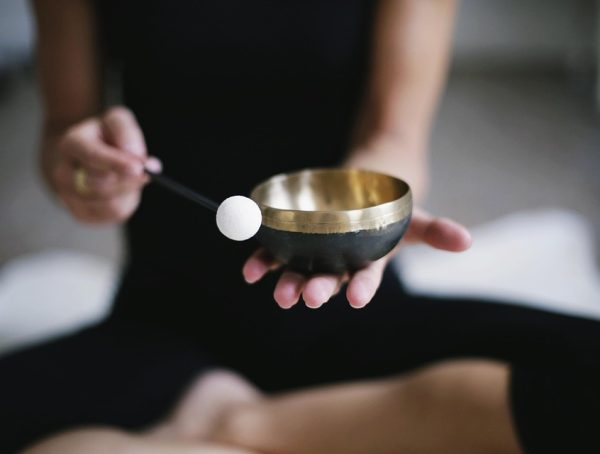Breaking the Cycle of Anxiety with Mindfulness Meditation
Anxiety can often feel like an unwelcome companion, one that lurks in the shadows and jumps out at the most inopportune times. Though it can be a natural response to stress, chronic anxiety can hinder our daily lives, affecting our relationships, productivity, and overall well-being. However, there is a beacon of hope: mindfulness meditation. This ancient practice has gained momentum in modern mental health discussions, serving as a powerful tool to break the relentless cycle of anxiety.
Understanding Anxiety
Before diving into mindfulness, let’s take a closer look at what anxiety is. It’s not just stress; it’s an overwhelming feeling of dread and apprehension that can manifest physically as heart palpitations, muscle tension, and fatigue. Anxiety often triggers a cycle of worry—thoughts about the past or future spiral out of control, leading to more anxiety. The good news is that mindfulness meditation provides an effective means to interrupt this cycle.
What is Mindfulness Meditation?
Mindfulness is about being fully present in the moment and maintaining a non-judgmental awareness of your thoughts and feelings. Mindfulness meditation invites you to observe your thoughts, sensations, and emotions without getting caught up in them. It teaches you that thoughts are just that—thoughts. They don’t necessarily dictate reality.
The Benefits of Mindfulness Meditation for Anxiety
1. Reduces Rumination
Mindfulness helps divert attention from the repetitive thoughts that fuel anxiety. As you practice being mindful, you learn to recognize when your mind wanders into worry and gently guide it back to the present.
2. Enhances Emotional Regulation
Becoming more aware of your thoughts and feelings can help you understand them better. With regular practice, you’ll gain emotional resilience, making it easier to manage anxiety-provoking situations.
3. Lowers Stress Levels
Engaging in mindfulness meditation can lead to decreased levels of cortisol, the stress hormone. Consistent practice cultivates relaxation and promotes a calm state of mind.
4. Improves Focus and Clarity
By honing your capacity to focus on the present, mindfulness can enhance clarity and decision-making. This newfound clarity can help break the cycle of anxiety by replacing overthinking with reasoned thoughts.
How to Get Started with Mindfulness Meditation
Action Steps to Incorporate Mindfulness Meditation into Your Life
-
Set Aside Time:
Start with just 5-10 minutes per day. Find a quiet space where you won’t be disturbed, and commit to a regular time each day. -
Choose a Comfortable Position:
Sit comfortably with your back straight. You can also lie down, but be cautious not to fall asleep! You may choose to close your eyes or leave them slightly open, with a soft gaze. -
Focus on Your Breath:
Take a deep breath in through your nose, filling your lungs. Hold for a moment, then exhale slowly through your mouth. Feel the sensation of your breath entering and leaving your body. -
Acknowledge Your Thoughts:
Thoughts will arise—this is normal. When they come, acknowledge them without judgment and gently redirect your focus back to your breath. -
Expand Your Awareness:
After a few minutes, broaden your awareness to include bodily sensations, sounds, and the feelings present in the moment. Observe them as they come and go. -
Establish a Routine:
Try to practice at the same time each day. Consistency helps solidify habits. Use apps or guided meditations for support if you’re starting. -
Reflect:
After your session, take a moment to reflect on how you feel. You may want to jot down your thoughts in a journal. This reinforces your experience and tracks your progress. - Practice Mindfulness Throughout the Day:
Beyond formal meditation, incorporate mindfulness into daily activities. Whether it’s eating, walking, or even washing dishes, stay present and engaged in the moment.
Overcoming Challenges
Starting a new practice isn’t without its hurdles. Common challenges might include distracting thoughts, impatience, or difficulty maintaining a routine. Here are some tips to overcome these obstacles:
- Be Patient: Learning mindfulness is a process. It’s okay if your mind wanders; the key is to bring your focus back gently.
- Start Small: Don’t overwhelm yourself with long sessions or lofty goals. Celebrate small victories, like completing a couple of minutes.
- Create a Supportive Environment: Surround yourself with resources—books, apps, or community groups—to make your practice easier and more enjoyable.
Conclusion
Mindfulness meditation offers a profound path toward managing anxiety and promoting emotional well-being. As you learn to observe your thoughts without getting entangled in them, you’ll equip yourself with a valuable tool to interrupt the cycle of anxiety and cultivate a more peaceful, present existence.
Remember, it’s not about achieving absolute mindfulness but rather continually redirecting your focus back to the present moment. Over time, you’ll notice a shift in how you respond to stress and anxiety.
Start your journey toward breaking the cycle of anxiety today—you have the power to change your inner dialogue and your life.
Final Quote
"Your present circumstances don’t determine where you can go; they merely determine where you start." – Nido Qubein
If you find value in this content, follow Kevin on Instagram (@KSteineman) for more inspiration and tips on mindfulness and mental well-being.
You might also like
More from Meditation
The Role of Mantras in Transcendental Meditation: A Deep Dive
The Role of Mantras in Transcendental Meditation: A Deep Dive Transcendental Meditation (TM) has garnered a significant following across the globe, …
The Science Behind Meditation: Improving Mental Health Naturally
The Science Behind Meditation: Improving Mental Health Naturally In today's fast-paced world, the pursuit of mental wellness has become paramount. Thousands …
Understanding the 7 Types of Meditation for Beginners
Understanding the 7 Types of Meditation for Beginners: A Path to Inner Peace Meditation has become a popular practice in recent …


































